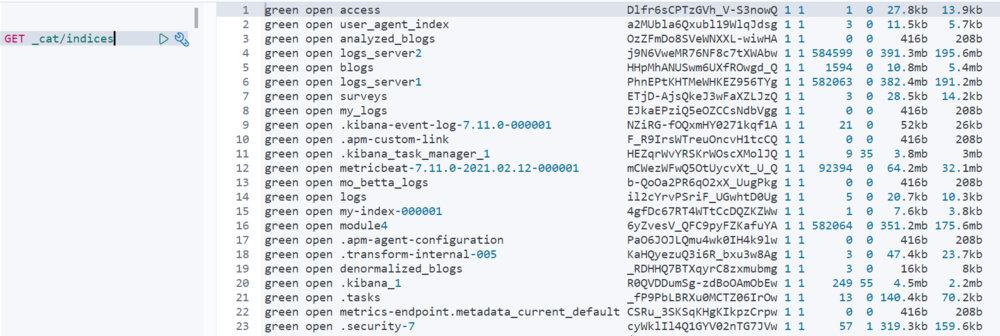ELASTIC CERTIFIED ENGINEER CERTIFICATION REVIEW + TIPS
TLDR: The exam itself was a fair assessment of the candidate’s knowledge around engineering an Elasticsearch cluster. All of the required tasks on the exam were grounded in real-world use cases that would be part of an ES engineer’s day-to-day work. Not only did I learn a ton about the engineering side of Elasticsearch but I am a stronger analyst because I better understand where my data is coming from and how it is processed.
ELASTIC HAS CERTIFICATIONS?
Over the last few years, Elastic has laid the groundwork for role-based certifications covering Analysis, Engineering, and Observability. I recently passed the Elastic Certified Engineer (ECE), and was honestly impressed with how well-thought-out the exam was for being a relatively new certification.
AUDIENCE
Who is this certification for?
-
Anyone wanting to learn more about building maintaining an Elastic stack
-
Security/data analysts wanting to shift to an engineering or data science direction
Who is this NOT for?
- Security/data analysts who want to improve their ability to build searches/visualizations/dashboards within Kibana. There’s a different cert for that! (Elastic Certified Analyst)
EXAM
This exam was one of the better-designed exams I have taken for any certification. It’s 100% hands-on and tasks-oriented, there are no multiple-choice problems or theoretical questions. The entire exam takes place in a Linux VM where you have access to a handful of VMs with a few Elasticsearch clusters between them. The required tasks are split between configuring nodes/clusters and interacting with the data via the dev tools console. I won’t say much about the exact tasks I had to complete and there’s no sense in me listing the topics covered because Elastic has already done that here. However, I will say it was well crafted to reflect real-world situations because of two design choices:
ACCESS TO DOCUMENTATION
The test allows you to access the Elasticsearch documentation and it completely changes the dynamic of this certification! You are not wasting cycles trying to memorize the exact syntax of hundreds of commands/API calls. This leads to a realistic experience because anyone in tech will tell you that they are constantly leveraging reference materials to do day-to-day tasks.
REALISTIC REQUIREMENTS
This exam might sound easy because of the access to the documentation but the way the tasks are phrased adds an interesting challenge. The tasks are written similar to business requirements in that it doesn’t tell you the specific tools/commands you need to complete them but instead, the exam asks for a solution that does “X”. Knowing HOW to get to a solution is the value that an engineer brings to the table and this test ensures that you have that ability. Familiarize yourself with the terminology used to describe features and understand when you would use one over the other.
PREPARATION RESOURCES
No matter which path you take, the most crucial factor is that you spend time getting hands-on experience with the Dev-Tools.
Here are two free resources that are must-haves when preparing for the exam:
Youtube - Preparing for the Elastic Certified Engineer Exam - This video gives you some insight into what the exam will be like and even go over a few example questions!
Elastic Engineer Exam Topic List - This list can act as an overarching checklist for the knowledge needed to pass the exam
OFFICIAL ELASTIC TRAINING
The recommended training for this certification is the Elastic Engineer I & Elastic Engineer II courses. As an Elastic employee, I am fortunate to have free access to both the On-Demand and Instructor-Led Training (ILT) versions, but they typically cost $1,600 each.
There is no price difference in the On-demand and ILT, and the labs are identical. However, the ILT is a better value for the following reasons:
-
Alongside the live training, it provides a pdf of the slides/labs and the datasets to stand up an identical local lab env for practice (On-demand lacks both of these)
-
4 days of four-hour classes set at a nice place to help guide you through the material
-
You get direct access to experts to ask questions for clarification
SELF-STUDY
I did not take this approach, but I did come across some solid resources during my research.
-
Exercises for the Elastic Certified Engineer Exam - This Medium blog maintained by Guido Lenacota’s blog has several posts with exercises to build ECE skills
-
Elastic Engineer Prep Course [A Cloud Guru] - While I haven’t taken this specific course, I took a handful of Cloud Guru’s AWS courses and found them to be laid out very clearly.
PRO-TIPS
COLLAPSE!
As you complete portions of your JSON request, it’s incredibly useful to collapse fields to check on where things are nested in relation to each other and to help you find brackets that are running amok. All this JSON can get overwhelming, so it’s beneficial to collapse some of your completed sections just to regain some headspace.
{BRACKET HUNTER}
Initial attempts at building complex queries can be frustrating because they will likely fail due to a misplaced bracket somewhere in the JSON structure. Troubleshooting bracket/nesting issues also happens to be one of the most important skills to get you through the exam. Unfortunately, error messages from rogue brackets are not exactly helpful to direct you to the problem segment so getting practice hunting them down manually is critical. Collapsing can also help with this!
TRUST BUT VERIFY
Learn how to check the changes that you have implemented. Submitted a new mapping for an index? Pull the mapping for that index to make sure that it worked correctly. Applied a node attribute to a few of your nodes? Better check that configuration for your nodes to make sure they were applied correctly. Get comfortable with the cat API to double-check configurations!


